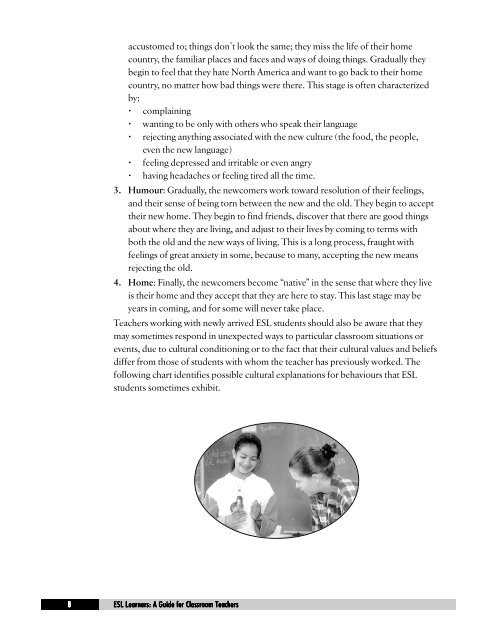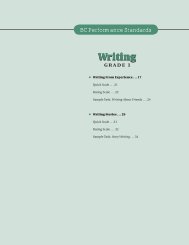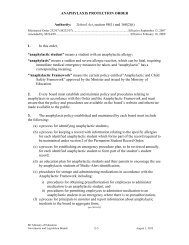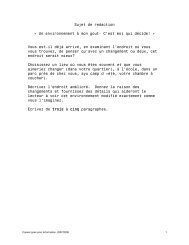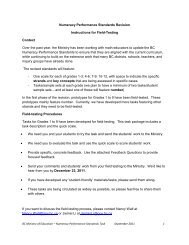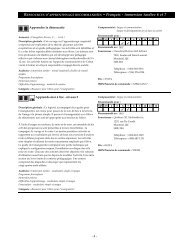A Guide for Classroom Teachers - Education
A Guide for Classroom Teachers - Education
A Guide for Classroom Teachers - Education
Create successful ePaper yourself
Turn your PDF publications into a flip-book with our unique Google optimized e-Paper software.
8<br />
accustomed to; things don’t look the same; they miss the life of their home<br />
country, the familiar places and faces and ways of doing things. Gradually they<br />
begin to feel that they hate North America and want to go back to their home<br />
country, no matter how bad things were there. This stage is often characterized<br />
by:<br />
• complaining<br />
• wanting to be only with others who speak their language<br />
• rejecting anything associated with the new culture (the food, the people,<br />
even the new language)<br />
• feeling depressed and irritable or even angry<br />
• having headaches or feeling tired all the time.<br />
3. Humour: Gradually, the newcomers work toward resolution of their feelings,<br />
and their sense of being torn between the new and the old. They begin to accept<br />
their new home. They begin to find friends, discover that there are good things<br />
about where they are living, and adjust to their lives by coming to terms with<br />
both the old and the new ways of living. This is a long process, fraught with<br />
feelings of great anxiety in some, because to many, accepting the new means<br />
rejecting the old.<br />
4. Home: Finally, the newcomers become “native” in the sense that where they live<br />
is their home and they accept that they are here to stay. This last stage may be<br />
years in coming, and <strong>for</strong> some will never take place.<br />
<strong>Teachers</strong> working with newly arrived ESL students should also be aware that they<br />
may sometimes respond in unexpected ways to particular classroom situations or<br />
events, due to cultural conditioning or to the fact that their cultural values and beliefs<br />
differ from those of students with whom the teacher has previously worked. The<br />
following chart identifies possible cultural explanations <strong>for</strong> behaviours that ESL<br />
students sometimes exhibit.<br />
ESL ESL Learners: Learners: A A <strong>Guide</strong> <strong>Guide</strong> <strong>for</strong> <strong>for</strong> <strong>Classroom</strong> <strong>Classroom</strong> <strong>Teachers</strong><br />
<strong>Teachers</strong>


